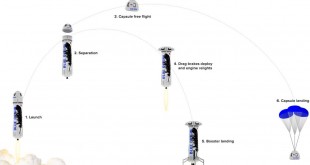An outbreak of violence in the ongoing Israeli–Palestinian conflict commenced on 10 May 2021, though disturbances took place earlier, and continued until a ceasefire came into effect on 21 May. It was marked by protests and rioting, police riot control, rocket attacks on Israel by Hamas and Palestinian Islamic Jihad, and Israeli airstrikes targeting the Gaza Strip. The crisis was triggered on 6 May, when Palestinians began protests in East Jerusalem over an anticipated decision of the Supreme Court of Israel on the eviction of six Palestinian families in Sheikh Jarrah.
On the afternoon of 10 May, Hamas gave Israel an ultimatum to withdraw security forces from the Temple Mount complex and Sheikh Jarrah by 6 p.m. or otherwise there would be consequences. When the ultimatum expired without a response, both Hamas and Palestinian Islamic Jihad launched rockets. Some rockets hit residences and a school. The conflict once again led to highly disproportionate number of casualties between the two sides (roughly one Israeli death to 20 Palestinians, this time), a significantly higher infrastructural damage in Gaza than in Israeli territory, and the use of the airspace – and not the sea or land – as domain of combat.
Israel began a campaign of airstrikes against Gaza; by 16 May, some 950 targeted attacks had demolished, completely or partially: 18 buildings including four high-rise towers, 40 schools and four hospitals, and also struck the al-Shati refugee camp. In addition, at least 19 medical facilities have been damaged or destroyed by Israeli bombardment. The al-Jalaa Highrise, housing offices of the Associated Press and Al Jazeera as well as 60 condominiums, was destroyed on 15 May, prompting outcry. By 17 May, the United Nations estimated that Israel had demolished 94 buildings in Gaza, comprising 461 housing and commercial units.
During the fighting, some Palestinian rockets fell short and landed in the Gaza Strip. According to Israel, approximately 640 did so, however many missiles were long-range missiles. The fact that several missiles originating from Gaza reached Tel Aviv indicates that at least some of those missiles were bigger in size (even if not necessarily using different technology) and are now capable of reaching more distant areas.
The Israeli Iron Dome system, in place to intercept missiles and other devices launched into Israeli territory, has in the past exhibited an interception success rate of about 90%. Yet, this time a much bigger number of missiles reached Israeli territory, and a much wider area was subject to hits. Hamas also attempted to overwhelm the Iron Dome system with an intense barrage of missiles. This meant that, even at a normal success rate, the system was unable to cope with a vast number of missiles launched within very short intervals of time.
At least six drones were intercepted by the Israelis. One of them was intercepted by the Iron Dome system, which is something that happened for the first time. Some other drones were intercepted by technology systems that are classified by the Israel Defence Forces. This highlights how drones and counter-drone systems are becoming important strategic technologies in wars. The fact that Palestinian factions are using unmanned systems of different levels of sophistication also implies that drone systems are readily available and employed by both states and non-state forces.
Over the years, Israel has used diverse weapons to kill more than 400,000 Palestinian civilians and injure or cripple two to three times as many, including tens of thousands of women and children. Israeli arms industry is often accused of turning the West Bank and Gaza strip into their laboratory to test new weapons which are then sold to the international market as battle-proven weapons. These include tank fire, rockets, or cluster or phosphorus bombs.
The attack on Gaza the 2014 bled Israel to showcase some of its newest weapons. It was reported, a new version of this pilotless warplane – the Hermes-900 – made its combat debut when Israel attacked Gaza during the summer. Eyewitness accounts from doctors working in Gaza’s hospitals indicate that Israel dropped experimental weapons. The weapons are believed to include DIME (dense inert metal explosives), which causes horrific injuries by burning at high temperatures. Al-Haq, the Palestinian rights group, has stated that DIME was carried in Hellfire missiles that were dropped from Israeli drones. Israel allocates more than 5 percent of gross domestic product to the military. That means Israel spends a higher proportion of its national income on the military than even the US, the world’s only superpower
The high-velocity tear gas canister has been heavily tested in Bilin, Skunk water is a putrid-smelling liquid that is sprayed at protesters in order to get them to disperse. In East Jerusalem, Israel tested American black sponge bullets which caused huge damage and there are dozens of Palestinians that have lost their eyes and other organs of their body.The black sponge bullets are manufactured by Combined Tactical Systems, a Pennsylvania-based firm which also supplies Israel with tear gas.
“The laboratory of the occupied territories is where things can be fine-tuned, they can be tested, they can be retested,” said Neve Gordon, a politics professor at Ben-Gurion University of the Negev. “They can say, ‘Hey this was used by the IDF [Israel’s military], this must be good.’ And that helps the marketing of the goods.”
However Uzi Rubin, a founder of Arrow, an Israeli anti-ballistic missiles program, is now a researcher at the Begin-Sadat Center for Strategic Studies in Bar-Ilan University near Tel Aviv defends he way Israel has marketed its weapons as “battle proven.” “It is legitimate because the Vietnam War sold a lot of weapons,” he said. “War usually sells weapons. But this is not to say that Israel is seeking war in order to sell weapons.”
2014 Israel Palestine conflict saw debut of many new combat weapons
The violence was sparked off by abduction and murder of three Jewish teens in West bank followed by burning to death of Palestinian boy in a Jerusalem forest. Israel launched a massive crackdown on Hamas in the West Bank, leading to the surge in rocket fire from Gaza. Seventy three Israelis, including 66 soldiers have also been killed.
Hamas deepest rocket strike
The summer of 2014 saw Hamas’s armed wing, the al-Qassam Brigades carrying out its deepest rocket strike, reaching about 160 km from the Gaza Strip. “For the first time, the al-Qassam Brigades strike Haifa with an R160 rocket, and strike occupied Jerusalem with four M75 rockets and Tel Aviv with four M75 rocket.” Their arsenal included M-75, with a range of 75 kilometres, the Grad, which reaches 45 kilometres, and the homemade Qassam rocket, with a range of just 17 kilometres.
UN Commission reported that Palestinian militants had fired 4,881 rockets and 1,753 mortars towards Israel in July and August of last year, killing 6 civilians and injuring at least 1,600 people.
Israel’s Operation Protective Edge
Israel launched its military offensive Operation Protective Edge with the declared objectives of stopping Hamas firing rockets from Gaza into Israel, find and destroy Hamas’s rocket stores and wipe out a vast network of tunnels Israel sees as having been built for the purpose of infiltrating its territory.
According to the UN report’s findings, the 2014 hostilities saw a “huge increase” in the firepower used in Gaza with Israeli forces conducting more than 6,000 airstrikes and firing approximately 50,000 tank and artillery shells at targets within the enclave. Airstrikes were launched on more than 200 targets in Gaza attacking more than 160 sites including Hamas command centres and 118 concealed rockets launching sites.
The operation, which lasted 50 days, claimed the lives of 72 in Israel (six of them civilians and the rest IDF soldiers), and over 2,000 Palestinians (with disputed numbers of combatants and civilians), and saw big parts of the Gaza Strip reduced to rubble.
Moreover, the fighting in Gaza also resulted in the massive destruction of civilian infrastructure with some 100,000 residents still homeless, according to recent UN estimates.
Success of iron Dome
According to IDF “Approximately 985 rockets hit Israeli territory and 225 rockets were intercepted by the Iron Dome missile-defense system,” “with an overall success rate of 86 percent.”Israel deployed the first Iron Dome missile battery in 2011. Each battery consists of a command post, a radar array and several launchers, each with 20 missiles.
However, according to a detailed analysis carried out by scientists at the Massachusetts Institute of Technology, Ted Postol, an expert in missiles and missile defenses, has found evidence that only about 5 percent of Iron Dome engagements result in the targeted rocket being destroyed or even sufficiently damaged to disable its explosive warhead. In the other 95 percent of cases, the interceptor either misses entirely or just lightly damages the enemy munition, allowing the rocket’s intact warhead to continue arcing toward the ground.
Another technology that was employed in the conflict was Trophy, an Active Protection System mounted on Merkava IV tanks and other vehicles that tracks threat objects rapidly approaching the vehicle via an array of fixed radar antennas placed around the vehicle. The system automatically predicts the objects trajectory and then instantly aims a launcher that fires a canister of ball bearings at high speed directly at the object. Operation Protective Edge is Trophy’s first operational debut and so far it is said that the system has intercepted no less than five explosive projectiles fired at Israeli tanks.
UN independent Commission of Inquiry
Israel killed more Palestinians in 2014 than in any other year since 1967. More than 2,300 Palestinians killed and more than 17,000 injured, according to annual report by UN Office for the Coordination of Humanitarian Affairs. The conflict in Gaza in July and August was largely responsible for the dramatic increase in fatalities, claiming the lives of 2,220 Palestinians.
The report – issued by the UN Independent Commission of Inquiry on the 2014 Gaza conflict – suggests that possible war crimes were committed by both Palestinian and Israeli armed groups during the 51-day conflict, which resulted in over a thousand deaths and the widespread destruction of the Gaza strip.
Much of the destruction, notes the UN report, could be blamed on Israel’s use of weaponry with a wide kill and injury radius, particularly in the densely populated areas of Gaza where destruction and casualties are very likely.
In her summation of the report, Justice McGowan Davis observed that when the safety of an Israeli soldier is at stake, “all the rules seem to be disregarded.”
Peace treaty
Ban Ki-moon, Secretary-General of the United Nations, condemned Hamas and Israel both and said “After Israeli and Palestinian leaders can agree to stop the fighting, they must “sit down together and address all the root causes” of the current conflict.
This may, the Holy See and the State of Palestine agreed on the text of a treaty regarding the life and activity of the Church in Palestine, which is expected to be signed soon by both parties. It is hoped that the agreement will encourage the international community to acknowledge an independent State of Palestine, alongside Israel.
A senior official at Israel’s foreign ministry stated that Israel “was disappointed to hear about the Holy See’s decision to agree on a final text of an agreement … with the Palestinians, that includes the term ‘the state of Palestine’. This move does not advance the peace process and further distances the Palestinian leadership from returning to direct and bilateral negotiations.
Reference and Resources also include:
http://www.middleeasteye.net/news/why-europe-wont-impose-arms-embargo-israel-697912420
https://electronicintifada.net/content/cruel-experiments-israels-arms-industry/19011
 International Defense Security & Technology Your trusted Source for News, Research and Analysis
International Defense Security & Technology Your trusted Source for News, Research and Analysis



